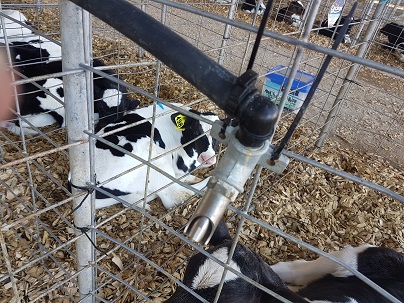Dry Matter Intake
In the words of Professor Mike Hutjens, University of Illinios, “Don’t give up on dry matter intake”. He says further, “High dry matter intake solves a lot of problems on a lot of farms”. I could not agree more!
Nothing reduces immediate profit, converting feed dollars to milk dollars, than underfeeding. Most common feeds in our dairy industry are capable to being converted from 1 kg DM of feed to 2 litres of milk after maintenance is met. The math is fairly simple. Even feed at 30c/kg DM (barley) will convert to at least 60c of milk income. Obviously energy density of that feed does influence conversion efficiency. Nevertheless, the lesson stands; if you want to increase profit dramatically, then offer more feed to your cows.
From 16 years of production consulting and 25 years of dairy farming, I can assure you the average Australian dairy cow is 4 kgs DM underfeed. That’s 8+ litres! By our conversion factor of 1 kg DM feed to 2 litres of milk this would produce $1/cow/day more profit. Our cows have incredible capacity to make profit from converting feed to milk.
So why didn’t our cow eat the extra feed?
1) Without doubt, she did not have access to the extra feed. This is by far the greatest limitation to profit in Australian dairy businesses. While the lactation average for the last twelve months in the USA was 10,450 litres and ours is 5200 litres, yet we hope to compete with the USA on world markets, I can assure you the simple difference is feed intake; bar none. The preparation of Feed Budgets for our clients is solely aimed at optimising milk production which has direct relationship to profit, and worse (or better), by a multiplier coefficient.
2) Her rumen is full. Isn’t this what we’re aiming for? Yes, if the feed is balanced for energy, protein and fibre. No if the fibre level is too high and it spends long periods of time in the rumen being digested. Indigestible fibre especially slows down the rate of passage of feed through the digestive tract reducing total feed intake; and milk production. The monthly ration analysis we do for all clients has the goal of a balanced and productive ration to optimise milk production under feed scenarios throughout the season. This is also tempered by what we grow to meet the Feed Budget.
3) The cow stops eating for no apparent reason. This usually occurs from metabolic signalling within the cow’s system. Too much rapidly fermented carbohydrate reducing rumen pH, either clinically or sub-clinical (SARA). Grain is not the only culprit here. It can be rapidly growing pasture with low fibre, frequently cows go from the dairy (grain) straight onto turnips which are highly digestible. Silage feed in between these two will solve a lot of digestive limitations to feed intake. Our pastures have risen in unsaturated fats in recent years through plant breeding. The rumen must convert these unsaturated fats to saturated fats before being transported to the mammary system. An excess of fat will reduce intake, reduce digestion of fibre and in high excess, will crash BF%. Mineral supplementation is essential for health, fertility, but also appetite and feed intake. Good transition nutrition will drive higher peak milk and appetite.
If you want to improve the viability of your dairy business, call Tina in our office (0400 991 814) and she will arrange a ‘no obligation’ visit by one of our team for to explain our nutrition/production services to you. As Mike Hutjens says, “Never give up on MILK!” and never forget your farm is a business.


